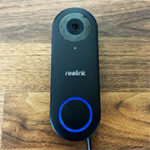They’ll tell you that you need to install the app in multiple languages continuously and after doing so, create an account to add the video doorbell. Be aware that there is some data collection (since this is the new normal) and after gaining access to the interface, click on the plus sign. This will open up a window that will try to scan the QR code from the side of the doorbell. Then, you will be presented with three options, connect to the WiFi, use the cable to connect to the network or you already have everything already configured.
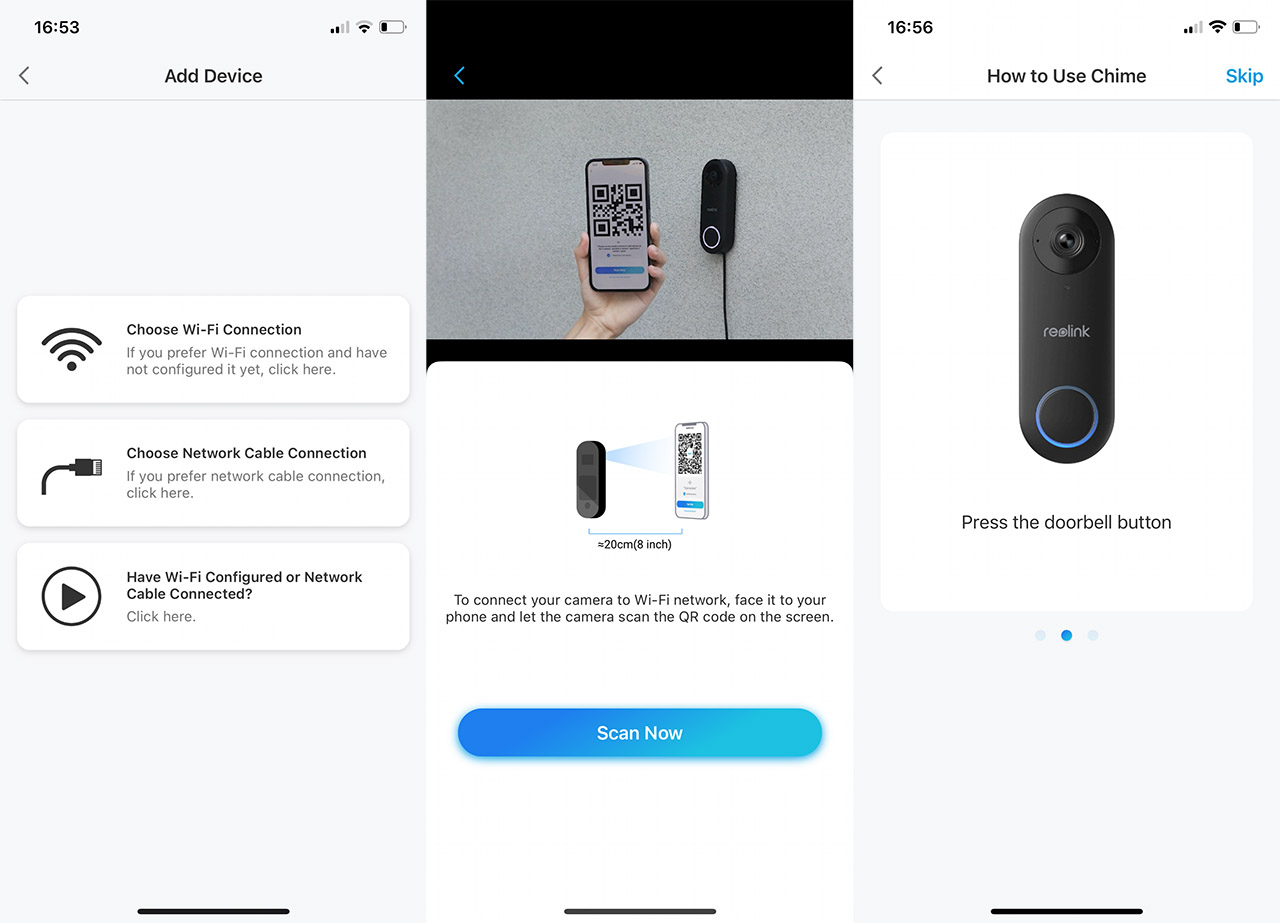
The first option is obvious, but the second is interesting since you can bypass the entire WiFi option and just use the Ethernet cable to connect to the router. Obviously, I went with the first option and after entering the SSID and password (there is support only up to 802.11n, so no WPA3), I was asked to scan the QR code from the phone with the camera. After that, I created an admin account for the Reolink Video Doorbell WiFi (couldn’t change the username) and then I was asked to plug the Chime into the socket. Pressing once the button on the doorbell showed that the two devices were already paired, and I could finally roam the app.
The App
As I already alluded, this is the same app that I have used before with the Reolink cameras, so the dedicated interface has a very familiar look. The live view covers most of the upper half of the screen with the option to trigger the alarm still being there, next to the Settings icon. Underneath the live view, there are the usual quick action icons, from which the most interesting one is the option to change the quality of the video.
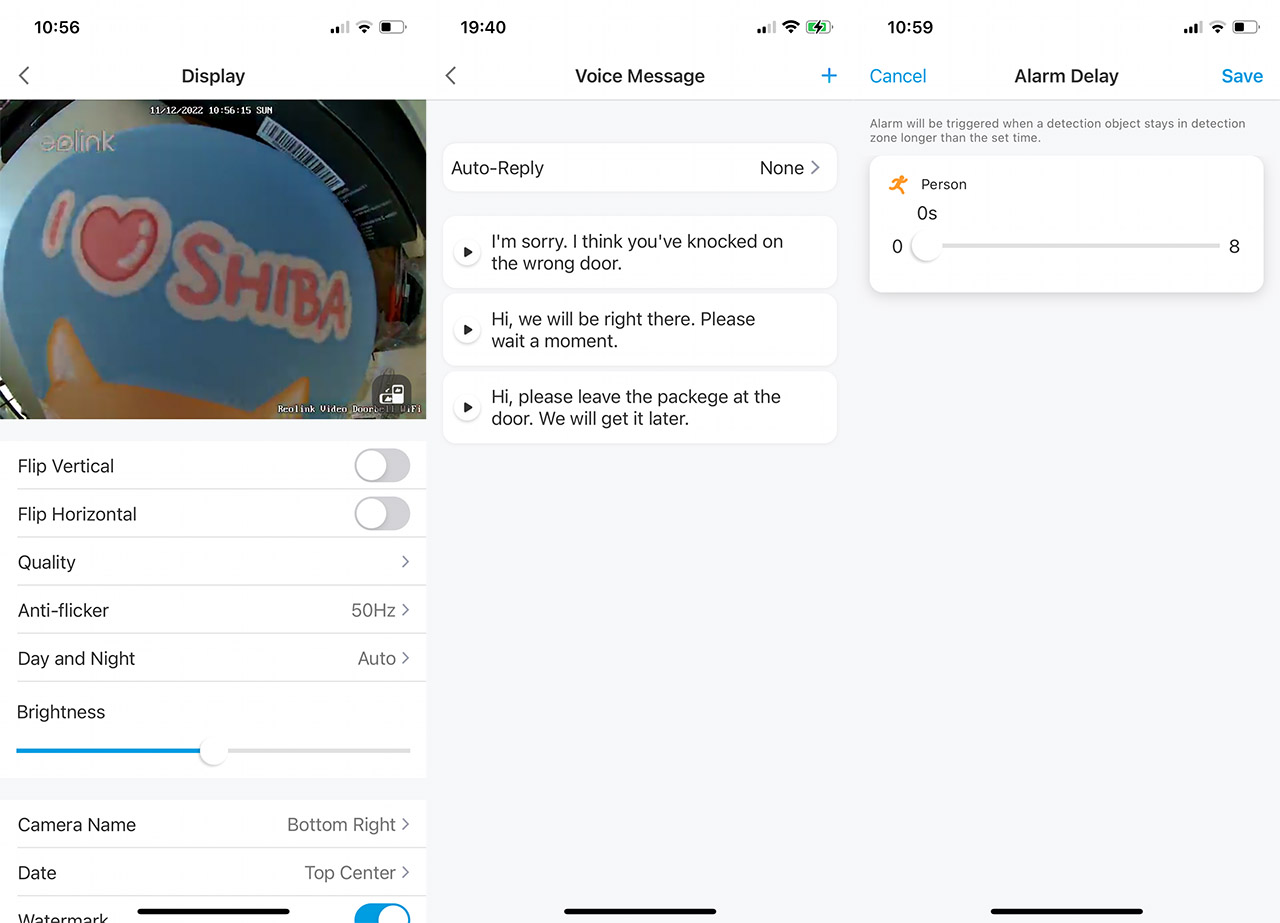
It can be Fluent, Balanced or Clear, so, depending on the strength of your WiFi signal, you can choose accordingly. Underneath these icons, there are three main options. The first one has a few pre-recorded messages that you can play in case you’re in a meeting, but you do have the option to add a few of your own (with your voice, so it sounds more natural). The second one is Tap to Talk which is pretty much self-explanatory and the third option is Playback where you can see the videos recorded by the camera. And it’s possible to filter them by general motion, person or car.
The Settings section allows you to change some Display options (including Brightness and the option to set a Privacy Mask), the Audio (set voice messages and pair chimes), as well as the Notification settings and the Detection Alarm. The latter allows you to set a Detection Zone (just paint over the area you want to trigger the alarm) and it’s also possible to set the Sensitivity, especially for the Smart Detection (to limit false alarms). There is an Alarm Delay that you can set in case someone is in the area for longer (although I suggest against it – a smart doorbell needs to notify you of any small changes), and I noticed that Reolink has included the Object size here as well.
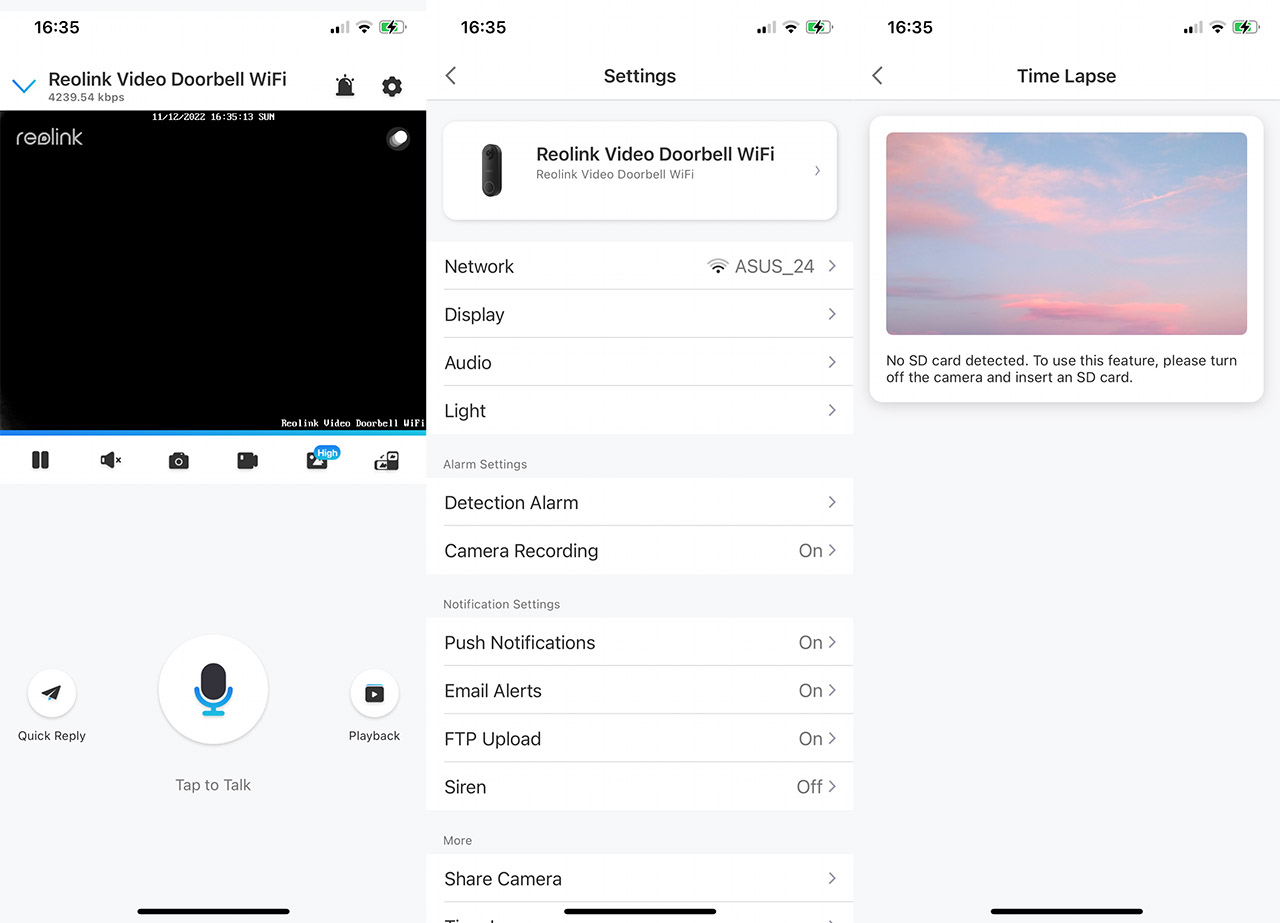
The object pretty much refers to living beings and the idea is to select how big the object needs to be to trigger the alarm. This way, a pet or any other animal will not prompt the camera to send you a notification. Reolink clearly didn’t need to adjust the settings that much between its cameras and the doorbell. And that’s a good thing because this way, it’s way more likely to end up with some ‘unique’ features and options that you won’t find on other brands.
The Image Quality
The Reolink Video Doorbell WiFi has a 5-megapixel camera (1/2.7″ CMOS sensor, 2.26mm, F/2.0 aperture) with a resolution of up to 2,560 x 1,920 pixels. The field of view has an angle of 134 degrees horizontally and 97 degrees vertically. And after checking the actual videos, it’s clear that there is some lens distortion especially on the left and right side. The colors look really good during the day, being slightly more contrasty (which is a signature look for Reolink cameras).
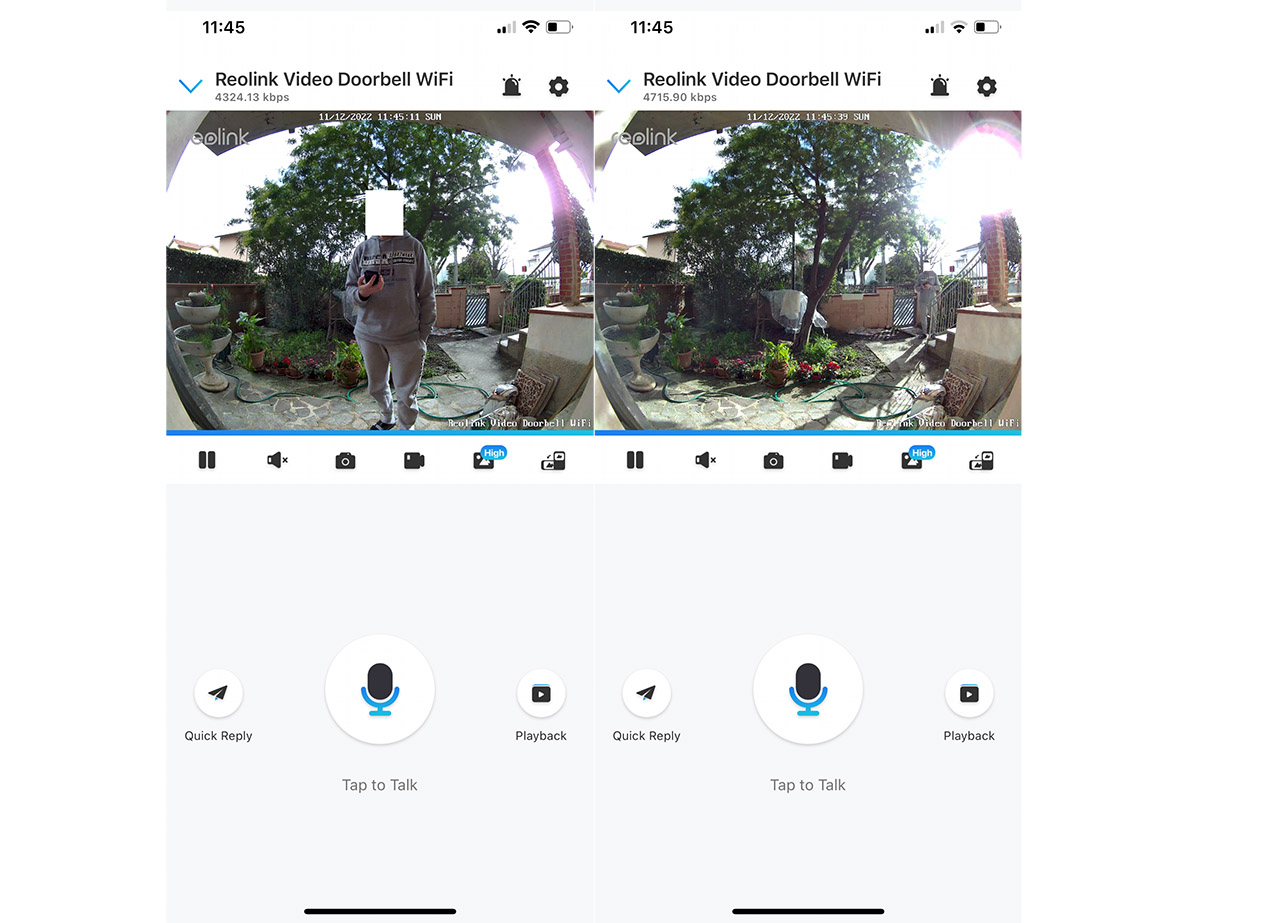
I positioned the video doorbell in front of the door (ignore the renovation stuff laying around) and, as you can see, about 5 feet away, the person can be very clearly seen and overall, there is a very good amount of detail. Moving farther, to about 30 feet, you can see that some detail is lost, but it is still possible to tell which person it was (I blurred the face, so you have to believe me on that). The face is not really that clear which become more obvious after I zoomed into the photo, but between 5 and 20 feet seems to be the sweet spot.
During the night, I decided to change the location since I wanted to have better control over the lighting – outdoors, there are light poles which I cannot turn off, so I relied on a dark hallway. This way, I could simulate a rainy night, where there is pretty much no light source. As you can see from the video, the Reolink Video Doorbell WiFi was able to tell that there was movement when the person was very close to the door and it’s difficult to tell who was at the door unless in was in very close proximity (inches away).
Next, I simulated the usual night light that’s around my house and, things changed dramatically because the camera had no issue detecting movement early (and that there was a person walking), but I could also identify who was in front of the door with ease. This means that it’s best to let some light shine in front of you house; it doesn’t have to be powerful or even near the door since an (anemic) light pole 45 feet away was more than enough to allow me to see in my front yard.
Let’s talk about privacy
Considering the Eufy scandal on how unencrypted video files were uploaded to the manufacturer’s server without the user’s consent (yikes), how well are you protected when using the Reolink Video Doorbell WiFi? As we got accustomed already, the Cloud is always the problem and yes, Reolink does offer a Cloud subscription, but you also get the option to use the microSD card and even their NVRs. But there is a bit more. If you want to get motion-related notifications on your phone, that comes from the Reolink Cloud.
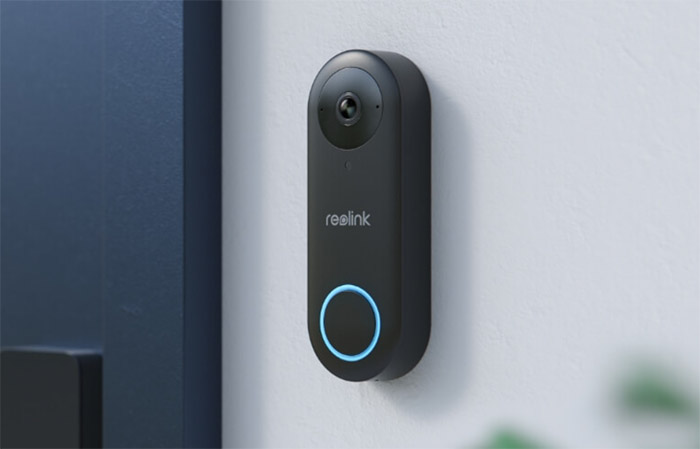
To get a better idea about what happens in the Cloud the manufacturer has stated the following: “(2) When video recordings are uploaded from your device to your Reolink Cloud, you are the controller and Reolink is the data processor of your cloud videos. Only those who have access to your Reolink account (you and those authorized by you) may log in to your Reolink Cloud account anytime to view, download, and/or delete such videos. Based on the contract, the system will automatically delete the expired cloud videos.”
Also, a bit lower in their privacy policy, this is what is stated: “To protect data transmitted between Reolink Cloud or Reolink applications and servers, we use the world’s most secure data communication protocol and algorithmic encryption currently available to ensure the confidentiality, integrity and authenticity of the information during transmission.”
I also want to mention that the installation process is VPN-friendly, and you can access the videos and the live footage even if you’re using a VPN.
How quickly do the notifications arrive?
It will depend on your WiFi signal, but in my case, 30 feet from the router with some walls in between (but with the doors open), I got the notifications very quickly, probably with a delay of a second, a second and a half, so not really a big deal. Also, the communication between the chime and the doorbell is also pretty seamless because I added another 30 feet between the two devices, and it would still ring when the button was pressed. I do admit that I liked the call approach that I saw on the Imilab video doorbell a bit more than the notification & tap to talk, but I suppose it works this way as well.
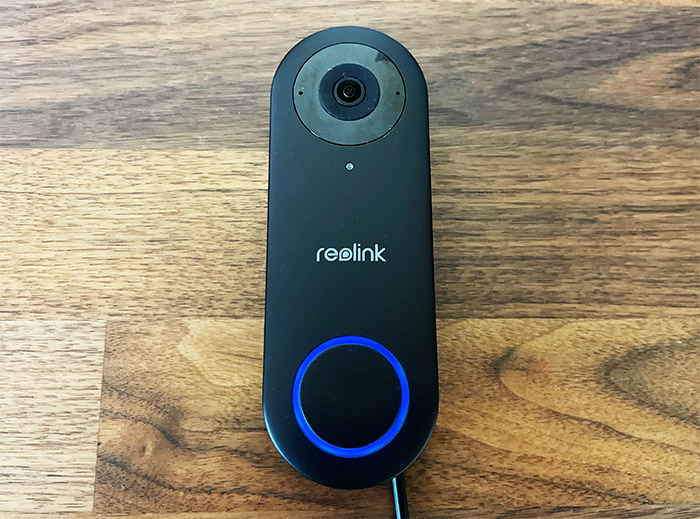
The Conclusion
I feel like the Reolink Video Doorbell WiFi is a lot closer to a full-fledged security camera than the other smart doorbells out there. And this is obviously a major advantage, even if some areas need a bit more polish. The video quality is very good during the day and quite decent during the night as well. The software is feature-rich, and the smart motion detection is just the cherry on top. It’s also not hard to install it but am sure a lot of people will be disappointed by the lack of integration with an existing chime. If that’s not an issue for you, do give the Reolink Video Doorbell WiFi a chance.

Mark is a graduate in Computer Science, having gathered valuable experience over the years working in IT as a programmer. Mark is also the main tech writer for MBReviews.com, covering not only his passion, the networking devices, but also other cool electronic gadgets that you may find useful for your every day life.

